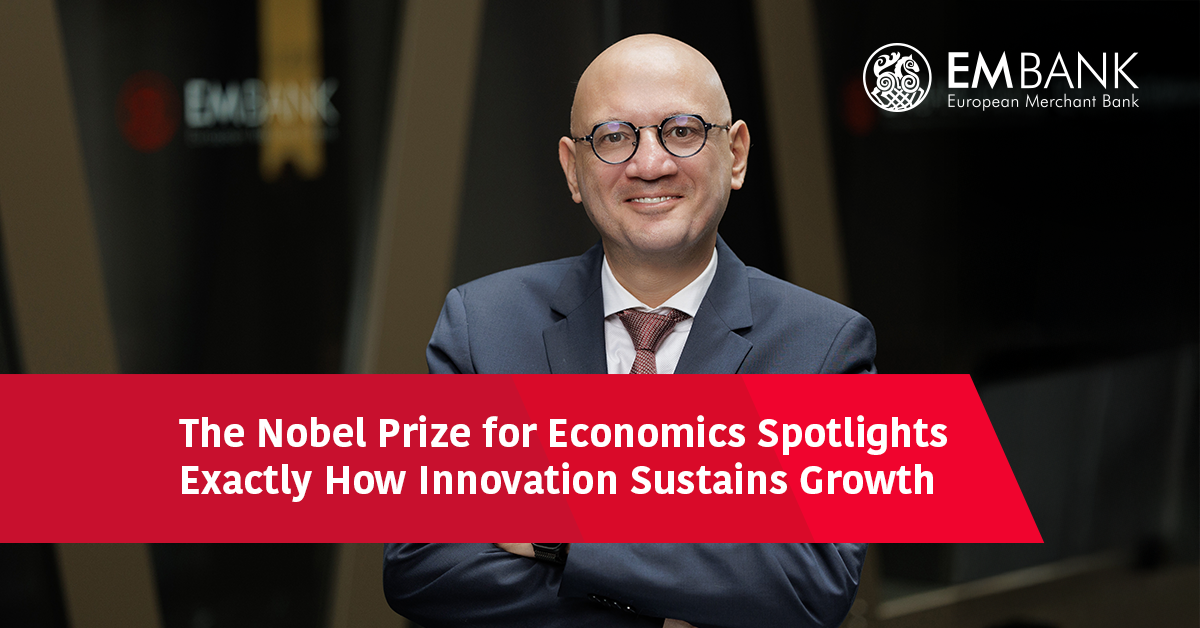According to the OECD, World Bank, and WTO data, the services sector accounts for 67% of global GDP as of 2021. Services also represent 50% of global employment surpassing agriculture and industry. In emerging markets and developing economies (EMDEs), services made up about 60% of output and 52% of employment in 2019. But within this huge economy of service business, are you actually being served?
When I started out in banking, the two most compelling mottos in our industry were “Anything else you’d like?” and “There’s no limit to service”. Great service stayed with me as a key measure of banking excellence along with trust, and I’ve never stopped asking if we serve our customers well. People still value good service and deserve it in banking.
The Tech-Powered Banking Experience
Banking is not an exception when it comes to undergoing profound changes driven by advances in technology. Now with Artificial Intelligence (AI) on the horizon, will more people be happier with their banks? I’d like to explore this topic through service quality.
Since 2011, the banking industry has invested over $2.8 trillion in digital transformation, significantly enhancing efficiency and convenience for customers worldwide. The investment has definitely paid off. As of 2024, Internet banking adoption is reported to have exceeded 67% in the Euro area, from a mere 36% in 2010. In a similar fashion, 63% of bank account holders in the US are mobile banking users, and 60% is the reported figure for the UK.
Top banks’ mobile apps consistently score above 4.5 out of 5 in major countries, indicating a generally high functional digital experience. Online interfaces became not just convenient, but mainstream. Digital-only banks (neobanks) with 1.8 billion customers worldwide are setting new benchmarks for convenience and personalisation, pushing traditional banks to improve their service offerings.
The pandemic accelerated digital payment adoption, with two-thirds of the adult global population using digital payments by 2021, reflecting the finance industry’s success in expanding digital service reach. But this was not driven solely by banks, their emergence of fintechs played a significant role in the uplift, also resulting in the migration of some bank customers as well. A 2023 Accenture study found that 59% of consumers acquired financial products from new providers in the past year, suggesting increased competition driven by service quality and innovation.
Decline in Perceived Service Quality
Today, good service is characterised by a blend of digital convenience and personalised human interaction when needed. Good service in modern banking is defined and measured by seamless omnichannel experiences, personalisation, speed and convenience, proactive support and strong security measures. Yet everywhere there is an increasing expectation for the customer to self-service oneself, which feels like anything but being served.
Research suggests that customer experience (CX) in banking has declined in recent years. Forrester reports that US banking CX quality fell for the third consecutive year in 2024. Australian banking CX quality reached its lowest point ever in 2024. EU banking CX quality dropped significantly from 2023 to 2024. This decline is concerning because as CX quality decreases, so does customer loyalty. Research by 10x Banking in 2023 revealed that global banks are losing 20% of their customers due to poor customer experience, with some banks admitting losses of 30-40% of customers for this reason. Slow digital transformation is recognised by 64% of banking leaders as a cause for missing out on new customers.
Despite digital advances, many customers feel banking has become impersonal and automated, weakening emotional connections and loyalty. This “sea of sameness” in digital platforms makes it harder for banks to stand out. While many customers rate their banks positively, satisfaction is not overwhelmingly enthusiastic. For example, only 34% gave high scores on specific service aspects, and many rate mobile banking experiences as merely “average” (59%). Despite digital growth, branches remain important for high-value or complex transactions, indicating digital services have not fully replaced traditional service quality expectations.
Banking services have become more efficient and accessible in many ways, but the perceived quality of service has not increased for many customers. The challenge for banks will be to balance technological innovation with the service quality and human touch that many customers need and value in banking relationships. Only competition built on better servicing people is likely to lead to service improvements. Commoditisation is repellent to banking talent as well. Good talent wants to matter and be part of an organisation, an industry that makes a difference.
Enter Generative AI
Banks have been using predictive AI, the type of AI that uses algorithms and statistical models to analyse large data sets and then extrapolate from them to predict. Fraud detection, customer service automation, credit score calculations and risk assessment, algorithmic trading, market trend and customer behaviour prediction have all benefited from predictive AI. It resulted in a 60% reduction in fraud incidents, helped banks determine loan decisions better and improved their customer retention rates.
Generative AI is a recent advancement that rides on deep learning algorithms and natural language processing (NLP). Learning on training data, GenAI is used primarily to create multi-modal content. Large language models (LLMs) are a type of generative AI that can perform a variety of NLP tasks like producing and classifying text, answering questions in a conversational way and translating text.
A step change has arrived. Thanks to the fast proliferation of LLMs like ChatGPT, Gemini, DeepSeek or Perplexity, banks can now move on from chatbots and virtual assistants with low agency to LLM AI assistance with higher agency. What does that entail? Digital assistance was limited by low agency in that chatbots were static and reactive, often driving customers mad, performing simple tasks in a simple environment, yet still had to be supervised to an extent.
AI Assistants with LLM open up a great service opportunity since they impact the manner in which customers interact with their bank on a daily basis. Not only have AI assistants moved up on the agency scale as more adaptive and proactive agents that can plan, do harder tasks and work in more complexity while requiring less supervision, but they also feel more “humanised”: Personas speak so well in the human voice of your choice, can be animated in real time on your screen, carry meaningful conversations with you and sense your mood from sensory-verbal cues. They provide instant responses to enquiries and execute routine tasks with precision, solving your needs faster. They significantly reduce customers’ wait times and improve satisfaction.
The convenience of this new tech is alluring.
Let me note that it will feel like a great improvement precisely because of the previous decline in service, where nearly all big corporations outsourced and downsized customer care to bare minimums, leading to the frustrated resignation of millions of customers at the end of a call centre phone line.
After decades of branches and regional centres getting closed and replaced by ATMs, computers, and later mobile apps, customers got accustomed to doing everything themselves so that AI assistance may come as a welcome relief!
The selling line is, while AI handles routine queries, human bankers are freed up to solve more complex problems and engage their customers in more value-added interactions, bringing a more personal touch enhanced even more by AI tools thanks to deeper, proactively offered insights to solve problems better and instill higher trust.
Will it turn out so? We’ll see.
As the stuff of science fiction becomes our agenda nowadays, my mind wanders to the premise of the popular 70’s British sit-com “Are You Being Served?” where a team of colourful sales agents deftly managed every hopeless situation while winning the customers’ favour somehow. While we navigate the AI-driven future, our focus should remain on harnessing technology to serve our customers better while maintaining the human connection that’s at the heart of service sectors such as banking, where our customers’ livelihoods and businesses are at stake.
Sarp Demiray, CEO of EMBank




